A reward for not weeding
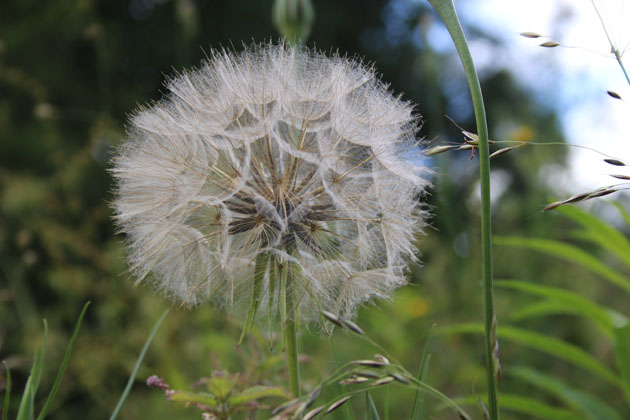
A nettle patch at my workshop grows gargantuan, along with willow-herb and the thugish Hogweed – they’re all fighting with dock and bramble! My plan was to clear the area, and I even set aside time to do it, but found it so full of insects, crawlies and caterpillers that I left it to nature.

Just now I spotted a yellow flower in the midst and fought my way towards it – not noticeable at first, but as I parted the long grass, a large whispy seed head also came into view, they’re called Shepherd’s clocks. This is the beautiful wildflower Meadow Salsify – or Meadow Goat’s Beard. I haven’t seen it growing here before so am delighted with my find.
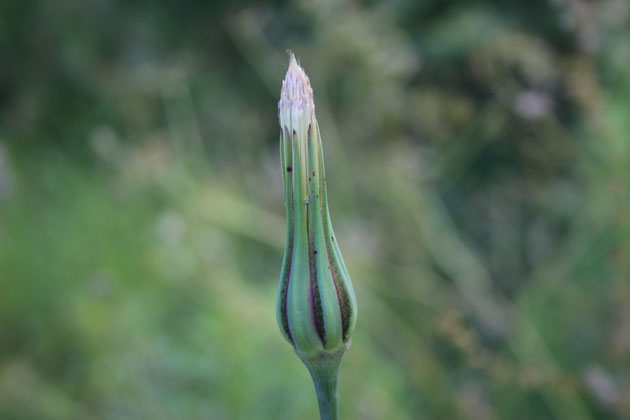
Its large yellow flower-head opens and twists slightly towards the sun each morning. In the early afternoon, the flower-head closes again. The English poet, dramatist and essayist Abraham Cowley (1618 – 1667) wrote about the Goat’s-Beard plant.
The goat’s beard, which each morn abroad doth peep
But shuts its flowers at noon and goes to sleep.
The propensity for early closing resulted in old country names of ‘Noon-flower’ and ‘Jack-go-to-bed-at-noon’ being given to the plant.
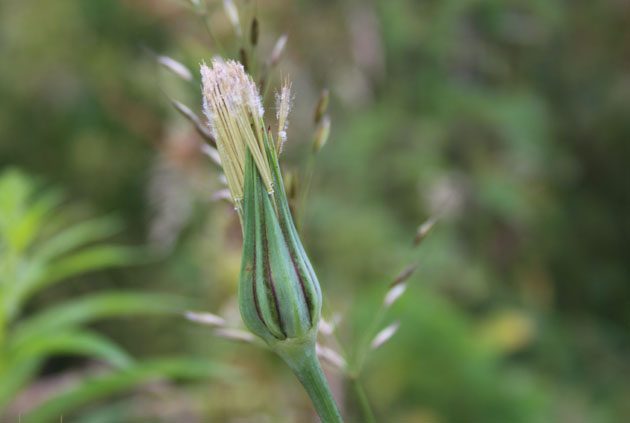
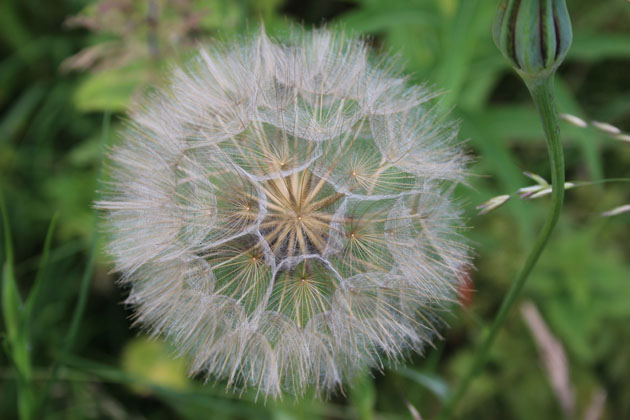
At some point in the afternoon the wind took seeds away leaving an imperfect sphere with only a few fluffy tufts remaining. I will be glad if some landed nearby and they twist their way through the meadowy weed tangle again next year.
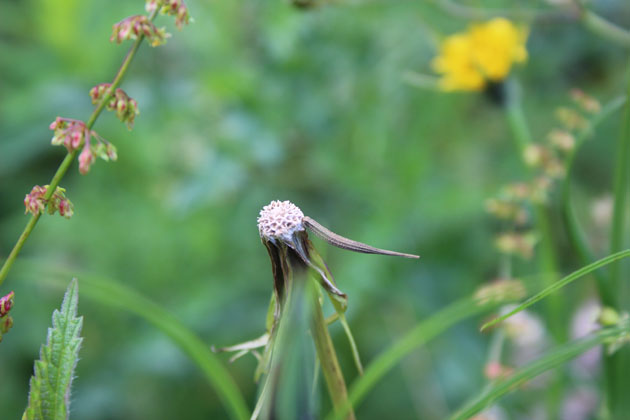
Every part and stage of this plant is beautiful, I puffed at the remaining seeds and they took upwards on their journey, leaving a dimpled white plate telling how they were once anchored.
I learn that if you break its stem and collect the sap that runs out, and dry it, you end up with something resembling chewing gum – do let me know if you’ve ever tried this – I think I’m going to …

6 Comments
it looks an awful lot like dandelions here. they are considered weeds but they are one of the first flowers to emerge after winter and so are an important food source for bees.
My first thought was that it was a dandelion, but the clock was so big and then the flower different too – I wonder if it comes out early here as well – they would have to be morning bees!
Thank you for your pictures I too found this beautiful Meadow Salsify seed head in a neighbor’s border and wondered what it was, as I have never seen it before,now I know .I have gathered some seeds and will be giving it a space in my small garden. It deserves a place in Chelsea as it is very eye catching. Wendy.
Hello Wendy, yes I agree! I do hope your seeds take and you enjoy it growing in your garden. I must collect some seeds this year, I’d love to try growing some in a pot.
Thanks for the info and especially the pictures which really help with ID. My son spotted one of these plants growing on a rural roadside verge in New Mills and we were able to find out more about it online using the collected wisfom of various websites. It is seed time now so I will try to harvest a few to see if I can naturalise it along with other dandelion-type wild flowers in my garden. Other websites say the whole of the plant is edible with stems like asparagus. Unfortunately, it is best harvested before the flower buds open. I think I read that it is biennial so maybe it would best not to harvest it for food as this would likely reduce the occurence of this lovely wildplant.
Many thanks for your comment – so pleased you were able to identify your plant and good luck with the sowing of your seeds. Mine seem to come up year on year, presumably self-sown.